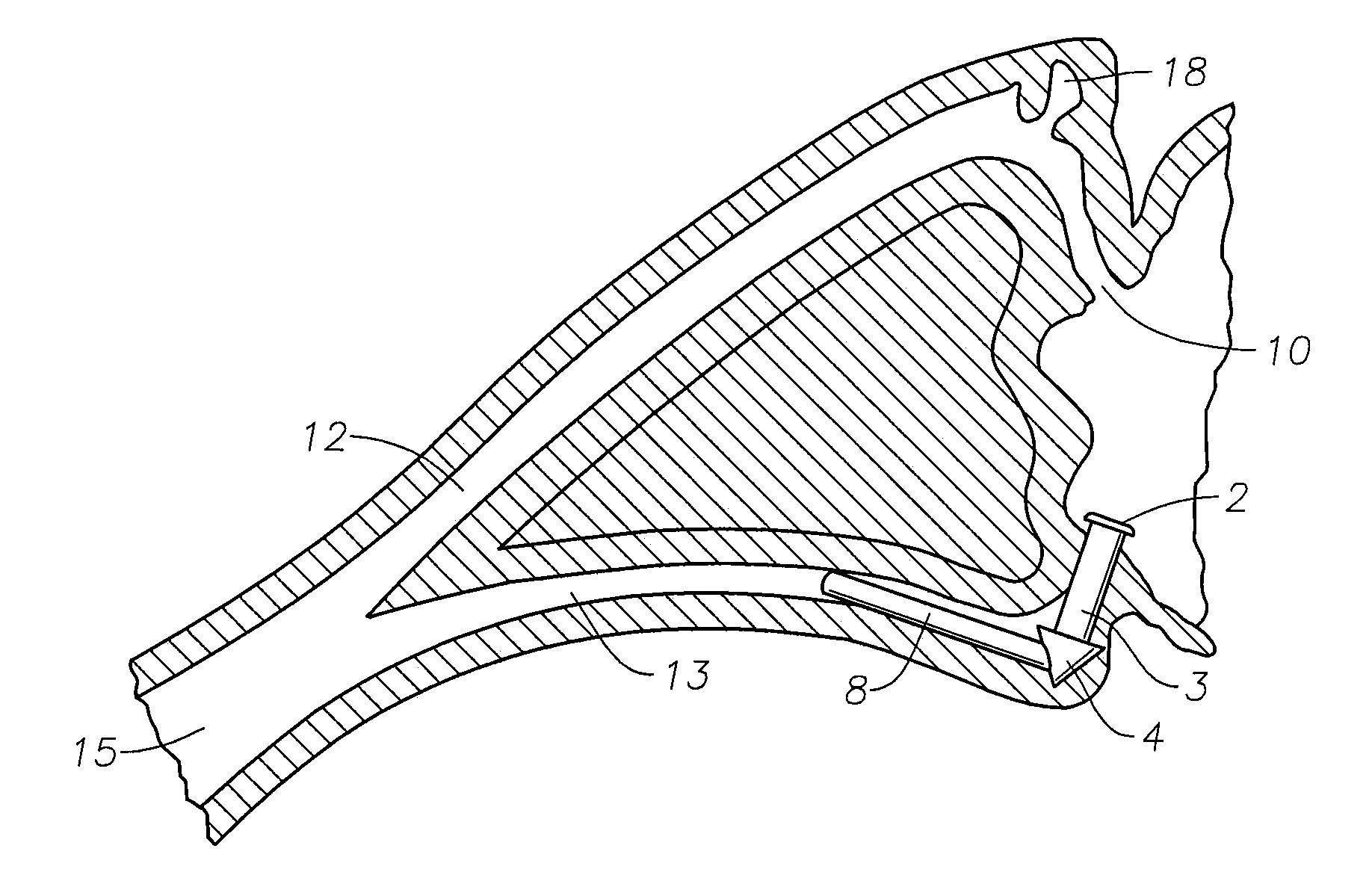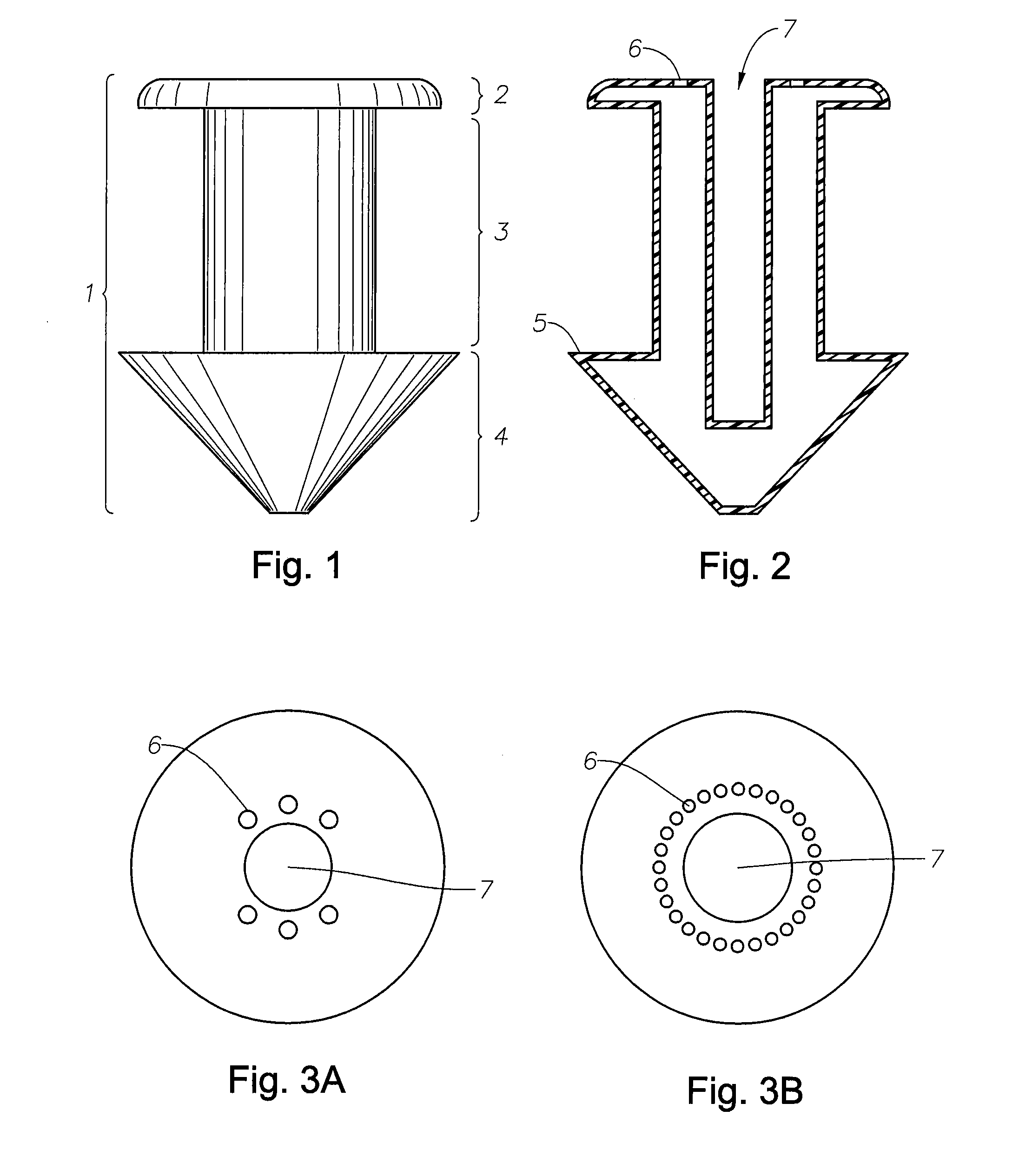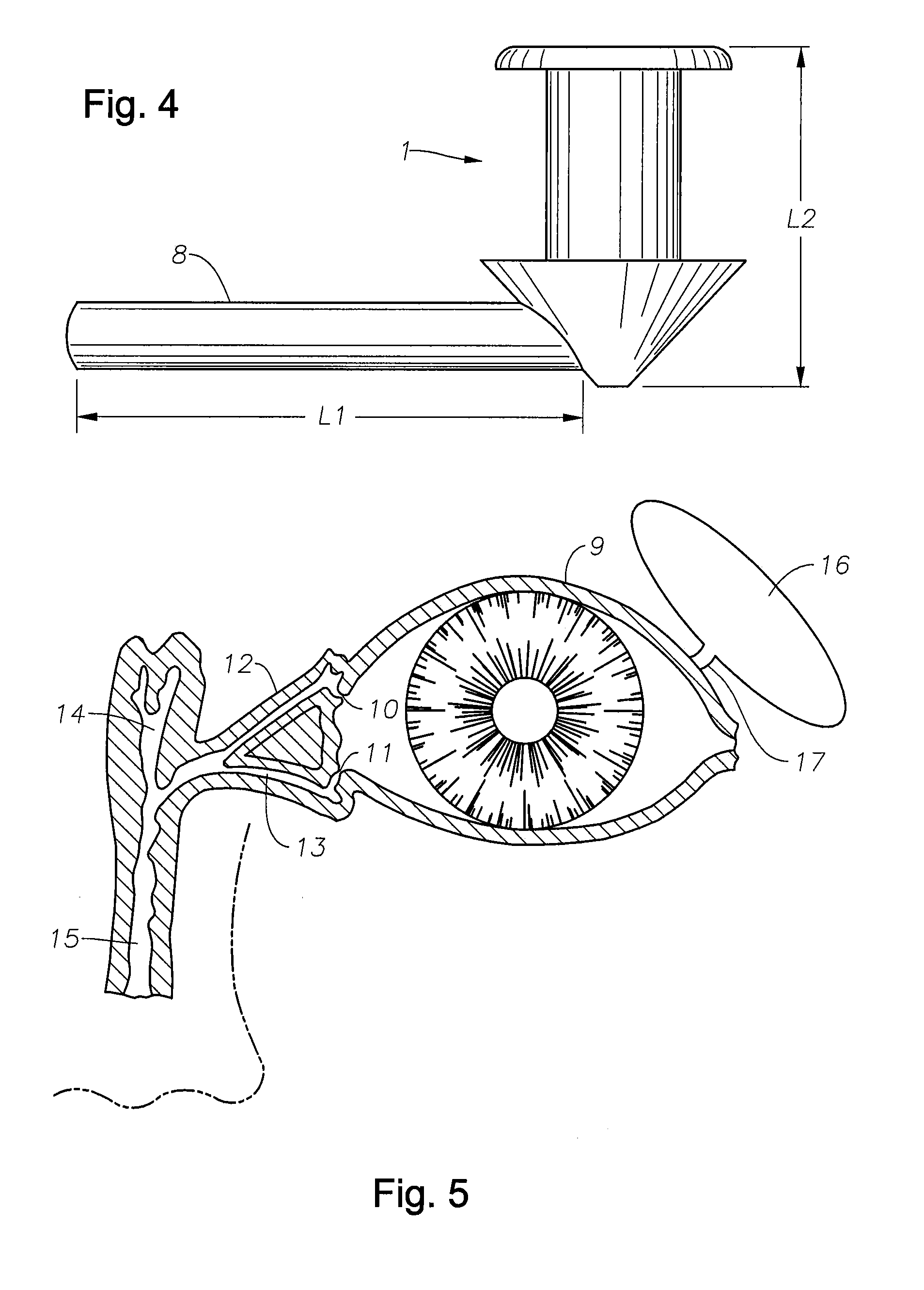Punctal Plugs and Methods of Delivering Therapeutic Agents
a technology of punctal plugs and therapeutic agents, which is applied in the direction of eye treatment, drug composition, prosthesis, etc., can solve the problems of family history of glaucoma, elevated intraocular pressure and damage to the optic nerve, and loss of visual field
- Summary
- Abstract
- Description
- Claims
- Application Information
AI Technical Summary
Benefits of technology
Problems solved by technology
Method used
Image
Examples
example 1
The Release of Prostaglandin from a Silicone Matrix is Controlled by the Surface Area of the Matrix Exposed to the Environment
[0069]To study the effect of surface area on the release of prostaglandin from a silicone matrix, prostaglandin release from silicone dies of three different sizes was measured. The largest silicone die measured 10 mm×10 mm×1 mm. A ½ size device (10 mm×5 mm×1 mm) and a ¼ size device (5 mm×5 mm×1 mm) were also used in this study. Each silicone die contained 10% AL-6598, which is a DP class prostaglandin analogue. The silicone die were placed in phosphate buffered saline (PBS) at 37° C. and the amount of AL-6598 released was measured. As shown in FIG. 8, the release of AL-6598 was dependent on the size of the silicone die with the larger surface area resulting in the more rapid drug release.
example 2
[0070]Two silicone die (10 mm×10 mm×1 mm) were coated with 5 μm of parylene using a vapor deposition process. To coat the silicone die, the die were placed in a vacuum deposition chamber and a vacuum was drawn in the chamber to approximately 0.1 torr. A parylene dimer (di-para-xylylene) was vaporized at approximately 150° C. Then pyrolysis of the monomer (para-xylylene) was affected at approximately 680° C. and 0.5 torr. The monomer then entered the deposition chamber at approximately room temperature (approximately 25° C.) and was adsorbed and polymerized onto the silicone die.
[0071]The parylene coated silicone die were then milled using FIB. Pores of 1 μm and 1.5 μm were milled through the 5 μm thick layer of parylene on one of the silicone die. Each pore was milled within 30 seconds. 1000 Angstroms of metal were deposited on the surface of the parylene to prevent the “charging up” of the parylene layer by the impinging gallium ions during the FIB etchi...
example 3
Punctal Plug Containing Microspheres
[0072]Travoprost is prepared as a polylactic acid microsphere having an average size of 100 nm-1 μm. The microspheres contain 10% travoprost by weight. 10 g of drug-loaded microspheres are added to 45 g of silicone Part A in a first Semco press tube and mixed on a Flack Tek mixer at 1500 RPM for 30 seconds. 45 g of silicone Part B are added to a second Semco press tube. Both press tubes are placed on an injection assembly of a premetered silicone press and injected into a steel mold to make a silicone die having the desired punctal plug shape and dimensions. After curing, the silicone device is coated with parylene and etched according to the procedures described in Example 2.
PUM
| Property | Measurement | Unit |
|---|---|---|
| Fraction | aaaaa | aaaaa |
| Fraction | aaaaa | aaaaa |
| Percent by mass | aaaaa | aaaaa |
Abstract
Description
Claims
Application Information
 Login to View More
Login to View More - R&D
- Intellectual Property
- Life Sciences
- Materials
- Tech Scout
- Unparalleled Data Quality
- Higher Quality Content
- 60% Fewer Hallucinations
Browse by: Latest US Patents, China's latest patents, Technical Efficacy Thesaurus, Application Domain, Technology Topic, Popular Technical Reports.
© 2025 PatSnap. All rights reserved.Legal|Privacy policy|Modern Slavery Act Transparency Statement|Sitemap|About US| Contact US: help@patsnap.com



